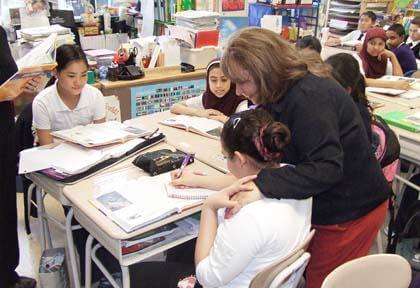By Nathan Duke
The principal and faculty of an Astoria school for new immigrants who speak 18 languages said they were concerned city funding rules could prevent the academy from getting adequate resources following a decline in the student population this past year.
IS 235, also known as the Academy of New Americans, has offered its yearlong program to new immigrant students, grades six through eight, for the past 13 years. The school, on the fourth floor of PS 234 at 30−14 30th St. in Astoria, can provide classroom space for as many as 250 students, who hail from Brazil, Ecuador, Colombia, China, Bangladesh, India, Pakistan, Egypt and numerous other nations, Principal Carmen Rivera said.
But the school’s administrators and faculty are now worried they may face cutbacks in programs when their budget for the upcoming school year is finalized in May.
“We’re all feeling the pinch,” Rivera said. “We will not have as much funding as we’ve had in the past, but our teachers are very resourceful.”
Last fall the school had 110 students in its program, down from the 140 students it typically has during that time of year. The city Department of Education funds schools based on their enrollment numbers, so IS 235 will receive enough money to provide for the number of students attending the site in October.
But Rivera said students come in and out of the academy throughout the school year. The student body has grown to an estimated 190 children since last fall, but the school could be forced to operate during the next school year with allocated money that was based on lower enrollment numbers, she said.
“The school gets money based on how many students are enrolled,” said Ruping Lee, a math and English as a Second Language teacher at the school. “So we are a little worried.”
Students who start at the school during the fall must leave after one year to attend a locally zoned school during the following year. But students who arrive in the new year are allowed to stay an additional year.
Rivera said she is concerned that if the school has more students than available funding next year, the site could be forced to cut back on after−school programs, new textbooks and other resources.
The school allows students to begin at any time during the year. It also runs on a typical September−June schedule and operates during the same hours as other city public schools. Classes include ESL, math, English, social studies, English Arts, science and computers.
“Our goal is to help the students build a foundation,” Rivera said. “It’s a passport to a new beginning. We like to think of our school as a bridge to mainstream society.”
Reach reporter Nathan Duke by e−mail at nduke@cnglocal.com or by phone at 718−229−0300, Ext. 156.






























